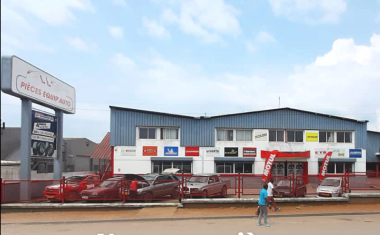
Africa: A continent where “Made in China” has taken over

The African automotive landscape poses unique challenges with an average fleet age of 16 to 20 years, predominantly composed of old imported vehicles and lower purchasing power. Despite these challenges, the Chinese automotive sector has successfully conquered the continent, leveraging its ability to provide low-cost products that align with market expectations.
In 2023, the research firm Mordor Intelligence anticipates approximately 1.33 million new vehicle sales in Africa (excluding the Maghreb). The aging fleet, with 80% of vehicles being over 10 years old, is a significant factor in the dynamics of the market. Some African states aim to restrict the importation of older vehicles, considering them as “rubbish” used cars. Asian brands, especially Japanese and increasingly Chinese, have found success in this market.
Chinese automotive manufacturers, with their hyper-competitive low-cost products, have gained a stronghold in Africa, capturing 90% of the parts business. This dominance is attributed to their understanding of the market’s price-sensitive nature, which has proven challenging for Western parts manufacturers trying to establish a premium positioning. The success of Chinese and Turkish brands in providing affordable solutions has reshaped the automotive aftermarket landscape in Africa.
Is it possible to withstand this pressure?
One approach is to adapt through tailored offers, establishing local factories (although this is complex), or even considering margin reductions. However, lowering margins too much might be impractical, risking competition without compromising specifications and brand image. “Africans did not wait for us to acquire
Chinese batteries. Simultaneously, repositioning with so-called medium products (private labels) is ineffective as we Europeans remain too expensive. The optimal strategy for Lubatex, the exclusive distributor of Clarios/Varta batteries in Africa, is to maintain its high-end positioning”, says Christophe Gavroy, Sub-Saharan Africa Zone Director of the Lubatex Group, leveraging years of African presence. The post-Covid period, marked by disruptions in Chinese factories, presented an opportunity to supply the stagnant market with replacement products from Europe and the US. However, the surge in prices in 2022 has already dampened distributor enthusiasm.
A few lucrative crumbs
Will the premium sector need to settle for a role of an adjustment variable? Currently, it maintains the remaining 10% of the market, deemed the “most lucrative share”, attracting distributors aiming to straddle both low-priced Chinese products catering to the predominant aging population, and the premium product intended for the niche of recent vehicles. European and American manufacturers leverage their strengths, including a well-established brand image, more favourable margin opportunities for distri- butors, and comprehensive services (technical hotline, robust logistics, training, etc.), a facet absent in the Chinese offerings.
However, these factors may not be suffi- cient to regain coveted market shares. Western equipment manufacturers may need to reconsider their entrenched economic model. The warning is explicit: “There is a risk that Western brands will exit the market within five years”, cautioned Gaël Escribe, CEO of Nexus Automotive International, in June during the inaugural IAMaga summit in Cairo to the magazine Rechange Maghreb.
Retrouvez la version en Français : Afrique : Le continent conquis par le “Made in China”










